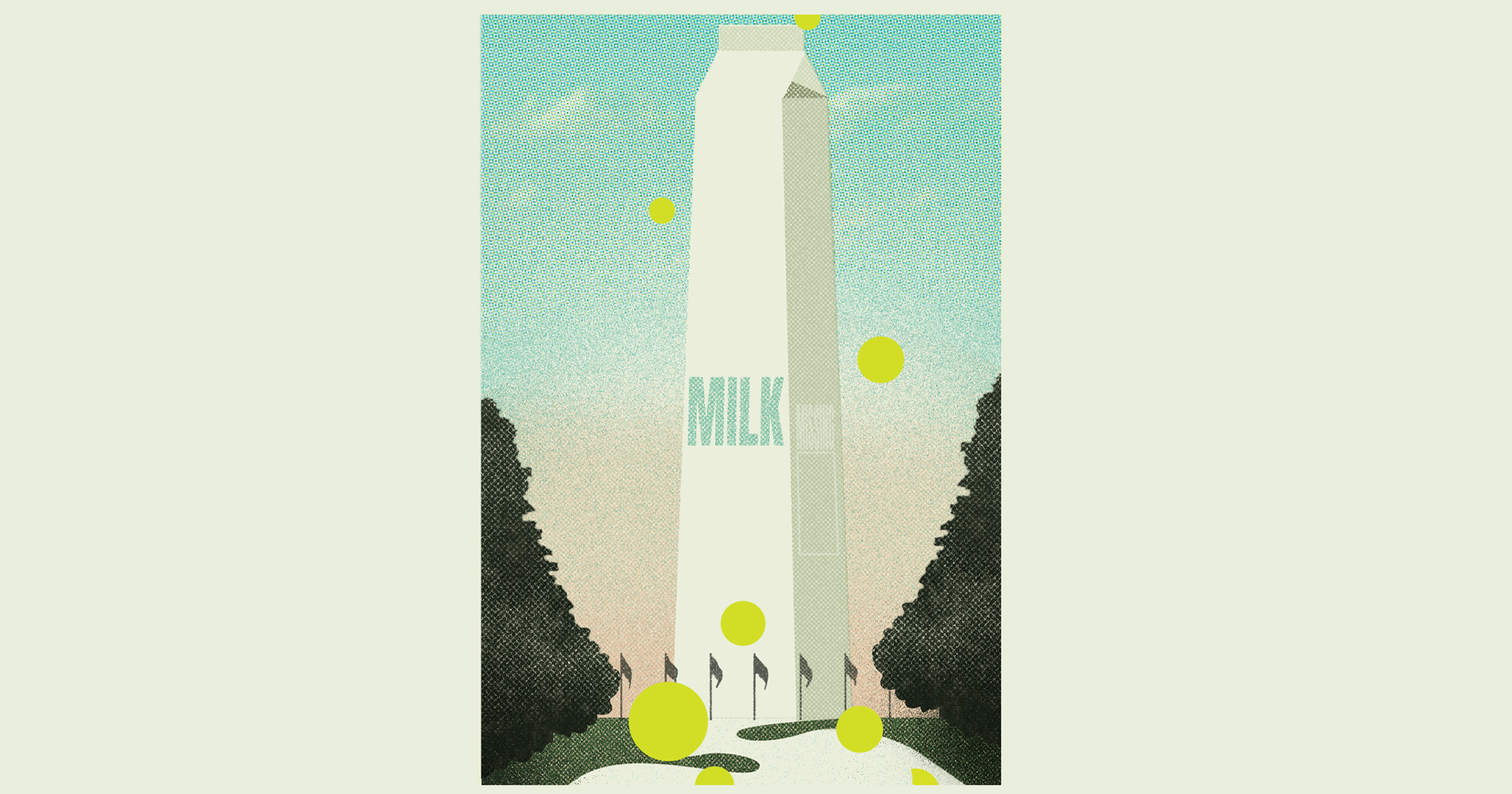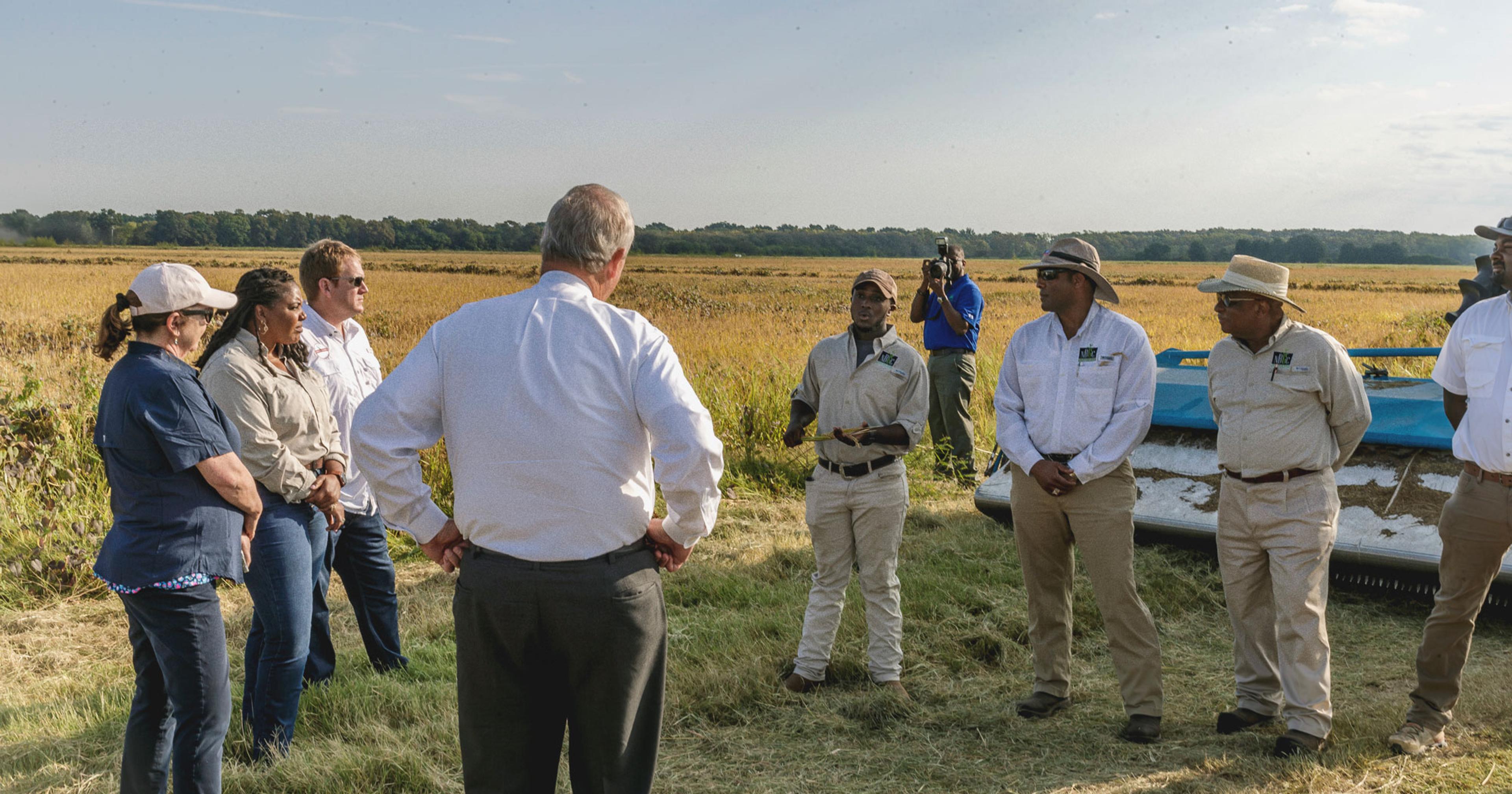This year, Farm Bill watchers see lots of room to fund programs that could better support climate goals.
It’s Farm Bill season again, that twice-in-a-decade opportunity for congressional agriculture committees to allocate federal money — almost half a trillion dollars in the 2018 bill — mostly around the production and distribution of food. The first Farm Bill, enacted in 1933, aimed to reduce surplus crops and raise agricultural product prices to give farmers a boost during the Great Depression. In the intervening years it has morphed into an extensive package of legislation that sets the price of commodities; funds agricultural research and training; maintains federal nutrition programs like the Supplemental Nutrition Assistance Program (SNAP); provides crop insurance and credit to growers; and supports forestry efforts, conservation, and rural development.
With the current Farm Bill — aka the Agriculture Improvement Act of 2018 — set to expire in September 2023, stakeholders are already visiting members of Congress and pushing ideas about what the next Farm Bill could or should look like. A number of policymakers and researchers see an opportunity to bring conservation and climate resilience to the forefront, especially after a destructive 2022 growing season in which climate-related disasters obliterated Texas cotton, tanked corn and rice yields, and provided scant water for crops across the West. Congress now has the chance, argue authors of a report for Illinois-based think tank Farm Foundation, to pass a “revolutionary” Farm Bill in which the food and ag sector might be leveraged to “reduce environmental concerns.”
What might such a Farm Bill look like? To find out, we spoke to Chris Adamo, co-author of the Farm Foundation report and adjunct professor at Vermont Law School; Trevor Findley and Emma Scott, clinical instructors at Harvard Law School Food Law and Policy Clinic, who contributed to a Climate & Conservation report for the Farm Bill Law Enterprise (FBLE); and Kathleen Merrigan, executive director of the Swette Center for Sustainable Food System at Arizona State University, who lent her expertise to a report making the case for organic agriculture as a climate solution.
Although none of these sources would hazard a guess as to how revolutionary Congress might behave, they remained cautiously optimistic that existing Farm Bill programs could provide a route to getting some resilience-focused initiatives written into the next bill. Findley noted that the current Farm Bill incorporates minimal requirements for conservation. But “when we think about the seriousness of the [climate] crisis we’re facing,” he said, now is the time to consider ways taxpayer funded-programs can boost “agriculture as a public good.”
Support perennial practices like agroforestry
Agroforestry, where fruit- or nut-bearing trees are grown in conjunction with other crops, not only diversifies farms and provides an additional revenue stream; it also has the potential to sequester a lot of carbon, control erosion, and improve water quality. For the authors of the FBLE report, it’s one of several perennial practices, like the growing of non-annual rice and kernza, that could be amped up in the next Farm Bill through the Environmental Quality Incentives Program (EQIP) and Conservation Stewardship Program (CSP), the mechanisms under which USDA funds working lands.
Despite the proven benefits of these systems, which are efficient at removing abundant greenhouse gas carbon from the atmosphere and storing it in roots, trunks, branches, and leaves, as well as providing resilience against drought, erosion, and flooding, the FBLE authors write that very little funding has been devoted to them in recent Farm Bills. They note that boosting funds to “increase staff training about the benefits … and enhance producer outreach” would be necessary complements for farmers to implement these types of practices.
“As we consider long-term solutions to the climate crisis and conservation of our country’s natural resources, we need existential shifts in agriculture,” said Scott. “There are a lot of ecosystem services that can be supported through agroforestry systems, carbon sequestration being a big one of those. We talk a lot about carbon sequestration in soils but carbon sequestration in [tree] biomass is something we can put a bit more stock in.”
Reform conservation compliance
Out of the four broad goals outlined in the FBLE report, the authors call this one “controversial.” That’s because, where most conservation-related Farm Bill funding is tied to voluntary practices, the report suggests a mandate: for Congress to “require that all farmers receiving taxpayer support to implement several practices that aim to advance natural resource conservation or climate change mitigation.” From FBLE’s perspective, said Scott, “One of the things we should be thinking about more holistically is the investments we’re making in agriculture. Maybe it’s not practical to have a full-scale conservation plan that does everything under the sun to mitigate climate change that is within a farmer’s capacity. But there are additional steps that can be taken beyond very minimal [existing] requirements.”
To that end, Findley and Scott brainstormed the idea of USDA’s Natural Resources Conservation Service “coming up with a list of available practices within a region and then having farmers choose a selection … that makes the most sense for their operations and also involves a fair amount of farmer choice,” said Findley, calling this approach “incredibly impactful.” Common conservation practices currently funded by EQIP include things like nutrient management, conservation tillage, and cover cropping.
Another way to go, said Findley and Scott, is to use USDA’s Soil Conditioning Index as a baseline metric for soil health achievements farmers would need to reach in order to participate in government programs, including crop insurance. Better funding for technical assistance — which Findley and Scott called “severely under-resourced” — would be necessary for either approach to work.
Link SNAP to sustainable farming
The Farm Bill not only supports producers; it also allocates funds to public programs that combat hunger and food insecurity, like SNAP. But what if those objectives could be linked? According to the Farm Foundation report, “[A] revolution in Farm Bill policy could see SNAP expanded to help drive climate adaptation throughout the food supply chain.” This would mean giving SNAP recipients extra benefits for buying sustainably raised foods, jumping off from the existing “double up” model in which SNAP benefits are worth twice as much when used to buy healthy foods at the farmers market. (In a similar vein, in 2020 and 2021 USDA purchased fresh foods from farmers and ranchers to support them during Covid shutdowns, to supply food banks and other nonprofits serving low-income U.S. residents, as part of the Farmers to Families Food Box Program.)
Adamo sees this as a way to temper the ongoing furor between “People saying, ‘Why should federal [SNAP] dollars go towards unhealthier foods [like snacks and soda]?’ And on the other hand of the debate, hunger advocates saying, ‘Let’s not have a parochial state that is demeaning and tells poor people‘” what they should eat. And helping provide climate solutions simply would make it all the better.
Although Adamo admits that what is considered “sustainable” in terms of farming practices is up for interpretation and would need to be hashed out, “A traditional offering in the more sustainable realm might be organic products, which tend to have a premium associated with them,” he said — he’d also be happy to see any third-party verified standard included. Adamo continued, “Nothing says [people] can’t use SNAP benefits now to purchase organic but obviously if you can improve their purchasing power for more sustainable products, that could be a market driver.”
Incentivize organic
Organics were first introduced into the Farm Bill in 1990 and ever since, advocates argue, they’ve been severely underfunded and far-from-embraced across USDA’s 17 agencies and hundreds of programs. This in spite of the fact that organic strategies support climate resilience via soil health and biodiversity, favoring practices such as crop rotation, cover crops, and composting, as well as minimal use of synthetic inputs. As the ASU report highlights, organic yields are 40% greater than conventional during drought; and organic crops show a 26% greater potential for long-term carbon storage. Additionally, 41% of conventional agriculture’s energy consumption comes from the production of synthetic fertilizers; since organic systems prohibit these inputs, they generate significantly fewer greenhouse gas emissions.
“When we’ve looked at most of the programs at USDA that dole out money, less than 1% goes to organic,” said Merrigan, even though 6% of Americans say that most of the food they eat is organic. She added that the current allocation is “not accelerating at the rate that we need, given the climate crisis that we face.” Merrigan would like to see statutory language added to the Farm Bill that requires 6% of the funding in multiple Farm Bill programs go to organics, in order to be commensurate with the amount of organic food being purchased. “Then the world would just radically change,” Merrigan said.
Funding for organic is currently confined to the National Organic Program within the Agricultural Marketing Service, as well as a scattering of other outposts at USDA, such as the National Institute of Food and Agriculture. “I think it’s time to be showcased again” in the Farm Bill, Merrigan said, to “help young farmers get a foothold in American agriculture ... put more wealth in rural communities, and … help our country meet climate and international sustainable development goals.”
Why not have the Farm Bill mandate that USDA buys 6% organic food?
Like Adamo, she sees opportunity to boost organic within government procurement programs. “The USDA buys tons of food for distribution in the school feeding program: school breakfast, lunch, after school, summer feeding, as well as other nutrition assistance programs and meals ready to eat. They buy a lot of food.” Why not have the Farm Bill mandate that it buy 6% organic, she argued, calling a USDA purchase of California peaches to protect farmers from plummeting prices due to overproduction “a big step in the right direction.”
Another place in the Farm Bill she sees 6% for organic as being “really impactful” is in research. “Organic farmers over the decades have out of their own pockets done a lot of the basic trial and error on their farms and it’s been to the benefit of all American agriculture,” Merrigan said. “But there could certainly be a lot more investment in that area. USDA research laboratories, sometimes they’re co-located at universities, sometimes not, but the people who work in those laboratories are USDA scientists and they do almost no organic research at all.”
Merrigan sees support for organic as closely tied to another Farm Bill mission, which is supporting rural development. Merrigan mentions “organic hotspots,” counties with high percentages of organic production that don’t just do the important task of supporting climate goals; they also have better economic indicators than surrounding, low-organic counties. “Do we know enough about that right now? No. Could rural development dollars be invested to figure more out? Yes. Could rural development programs be tasked with putting more investment in organic?” Merrigan asked. “That could really make a difference.”







